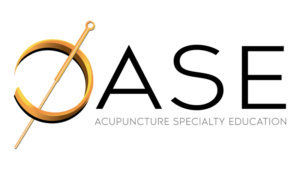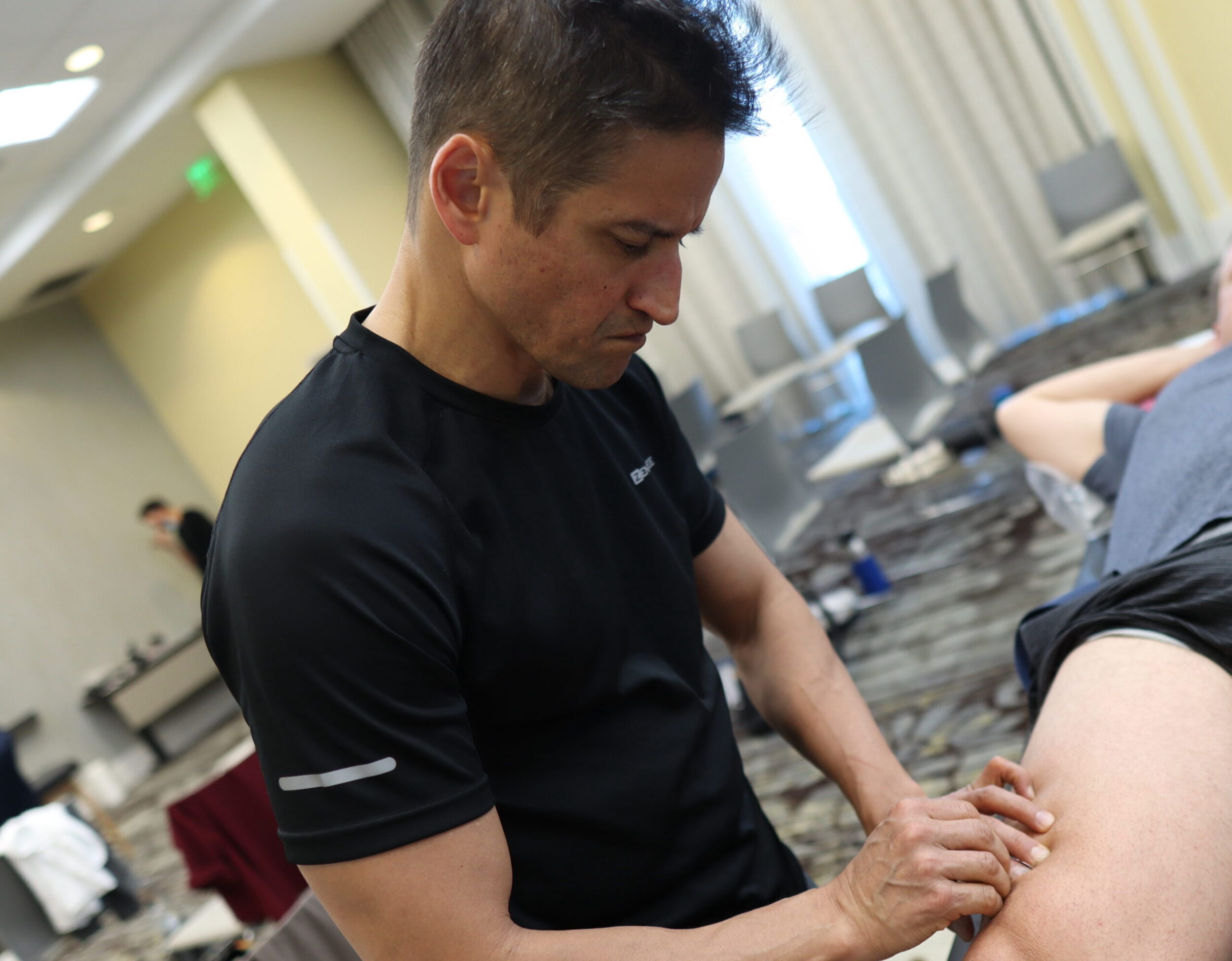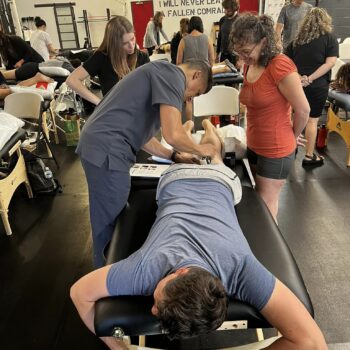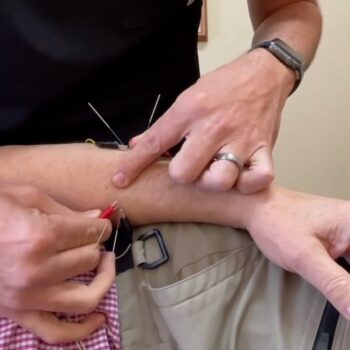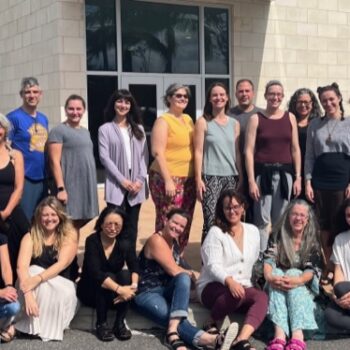Description
Assessment & Treatment of Common Lower Body Musculo-Skeletal Conditions using electro-acupuncture and motor points
Venue and Location:
City: San Diego, CA
Venue: The Marina Village Conference Center, 1936 Quivira Way, San Diego, CA
Dates: Saturday and Sunday October 15th and 16th
Times: Saturday 9-6, Sunday 9-5
Nearest hotels: Hyatt Regency Mission Bay and The Dana, both within walking distance or a 3 minute drive
Please note the following:
Coursework for this seminar will be added to your account, and can be found in ‘My Account’. This seminar includes:
- Motor Point Manual (now printable)
- EXSTORE Manual
- EXSTORE Exam Sheet
- PPT
- Live and recorded orientation meeting approximately 1 week prior to the seminar. (link to join the meeting will be emailed to everyone ~2 weeks prior to the seminar)
- Fundamentals of EA Webinar
Course outline:
This seminar covers some of the most common lower body musculoskeletal pain conditions, including proper assessment using EXSTORE and treatment using motor points, electro-acupuncture, and soft tissue techniques. Gait analysis will be covered in detail, including how to reat based on your findings. This seminar is designed to provide the clinical skills practitioners can implement easily and with a high rate of efficacy.
There is new/additional content for this Lower Extremity seminar:
- In depth gait analysis
- Functional analysis of the following joints involved in locomotion: 1st MTP, ankle joint, knee joint, hip joint, sacroiliac joint, lumbosacral joint
- Needling protocols to increase ROM in the above joints
- Analysis of foot arches and their effect on knee, hip, and low back pain
Course objectives:
- Learn the anatomy associated with all msk conditions covered
- Learn the pathology/physiology of all conditions
- Learn how to assess
- Learn how to treat using motor points, electro-acupuncture, and other modalities based on your assessment findings
- Understand gait and foot analysis including the joints of the lower extremity and acupuncture treatment protocols
A. Foot/Ankle Lecture discussing the relevant anatomy and biomechanical function
•bone, joint, muscle, nerve anatomy of the foot and ankle
•introduction to the fascia of the foot and ankle
•innervation of the fascia and retinacula of the ankle, paratendon and its role in proprioception
•Properties and role of fascia in force absorption and entry point of energy
•Understanding what joint move most during gait (walking) and running
•Learning what accessory movements are and their role in gait and injury along with their effect on the knee, and hip
•Demonstrating manual release and acupuncture treatment using hand positions
•Depth Review of Relevant Clinical Anatomy
•Motor/sensory nerves
•Ligaments, fascia, tendons, joints
•Musculature
•Blood supply
Role of Neurogenic Inflammation
•Review of what is neurogenic inflammation?
•Review of role and time frame of different stages of tissue healing
History/Assessment of Plantar Fascia patients
•ROM
•EXSTORE role
•special testing
•learning history taking
Treatment options and demonstrations of plantar fasciitis
•Electroacupuncture
•Motor point acupucture
•Guasha and manual techniques
B. Classification, Assessment & Treatment of Knee Pain
•Course outline:
What is the difference between traumatic/non-traumatic knee pain?
•pathophysiology
•causes
•risk factors
•anatomy of structures at play
Assessment Protocol
• muscle assessment
• knee/ hip ROM
•orthopaedic testing
Elemental Breakdown of Treatment Protocol
Manual
•guasha application
•manual release
•cutaneous nerve release
Electroacupuncture
•motor points
•Perfusion treatment T10-L2
Patient examples
•Assessment
•Treatment Protocol
•Subsequent Treatments
C. Assessment & Treatment of Hip Pain
•What is an osteoarthritic hip?
•pathophysiology
•causes
•risk factors
•anatomy of structures at play
Assessment Protocol
•meralgia paresthetica
• muscle assessment
•hip ROM
•orthopaedic testing
Elemental Breakdown of Treatment Protocol
Manual
•guasha application
•manual release
•cutaneous nerve release
Electroacupuncture
•motor points
•Perfusion treatment T10-L2
Patient example
•Assessment
•Treatment Protocol
•Subsequent Treatments
D. Assessment and Treatment Low Back Pain
Review of Anatomy and Function
How do you perform an assessment on acute low back pain?
•What are your clinical goals based on your assessment?
•How do determine acupuncture point selection when planning patient treatment?
•What are the different treatment approaches to addressing acute low back pain with electroacupuncture?
Demo: Assessment & Treatment of Acute Low Back Pain Patient
•How to provide an acute low back pain assessment
•Demonstration of acupuncture point selection and treatment of acute low back pain using motor points, the pointer plus, and electro stimulators.
Becoming Familiar With Radicular (Sciatica)Low Back Pain
•What are the causes and physiological mechanisms
•When it is considered a clinical emergency
•Assessment on radicular low back pain
•What are your clinical goals based on assessment
•Determining acupuncture point selection when planning patient treatment
•Different treatment approaches to addressing radicular low back pain with electroacupuncture
Demo: Assessment & Treatment of Radicular (Sciatica)Low Back Pain Patient
E. Assessment & Treatment of Sacroiliac Joint Dysfunction
•What is Sacroiliac Joint Dysfunction
•pathophysiology
•causes
•risk factors
•anatomy of structures at play
•Assessment Protocol of Sacroiliac Joint
•Elemental Breakdown of Treatment Protocol
-Electro-acupuncture
-Manual Work/ Exercises
LIVE Patient(s) Example
•Assessment
•Treatment Protocol
•Subsequent Treatments
F. Assessment & Treatment of Lumbar Spinal Stenosis
Anatomy & Biomechanics of the lumbar spine
-vertebral joint
-zygapophyseal joints
-intervertebral foramen & spinal nerves/vasculature
-key musculature
Pathogenesis of Lumbar Stenosis
-causes
-process of pathology/arthritis
-mechanics
Neurogenic Claudication vs Vascular Claudication
-causes
-process of pathology
-differentiation
Assessment & Treatment of Lumbar Spinal Stenosis
-visual inspection, physical assessment, radiology
-medium to high frequency electroacupuncture based on research
-adjunctive exercises
-manual soft tissue techniques
Seminar cancellation/refund policy:
- For cancellations 30 days or more before the seminar. Credit must be used within 12 months
- Cancellations within 30 days or less of the seminar: No refunds or credits
- Cancellation due to COVID: This would occur only if National, State/Provincial, or local government prevented the event from taking place and forced us to cancel the seminar. For example, due to a shut down or national travel ban. In these cases, refunds will be issued.
About Dr. Lombardi:
Dr. Anthony Lombardi is a 2002 graduate of the New York Chiropractic College and McMaster Contemporary Medical Acupuncture program in Hamilton, Ontario, and has been practicing acupuncture for 19 years. Upon graduation, he founded Hamilton Back Clinic and since then has become a private consultant to athletes in the NFL, CFL, and NHL. Over the past 15 years Anthony has given over 100,000 acupuncture treatments. In addition to practicing, Dr. Lombardi was also an instructor in the Contemporary Medical Acupuncture Program at McMaster University from 2004 to 2013. He developed his EXSTORE® system, which he currently teaches along with motor points and electro-acupuncture, to physicians and practitioners the world over. He regularly writes and contributes articles on motor points in the Canadian Chiropractic and Chiropractic Economics magazines. Dr. Lombardi’s library continues to grow, with some 60 webinars available covering a variety of MSK and pain conditions, as well as patient practice management topics. He holds live seminars throughout the U.S. and Canada.
